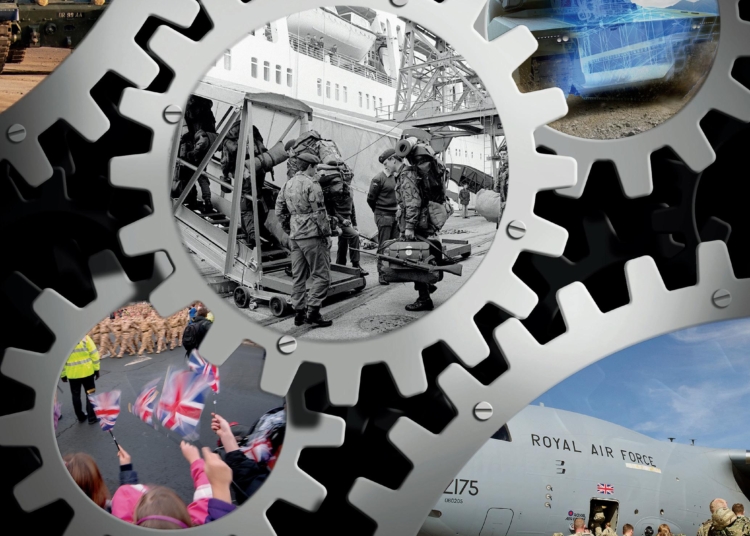This article comprehensively reviews the various training resources available to the military. It highlights the importance of physical conditioning, weapons and combat training, tactical training, mental resilience and psychological training, leadership development, language and cultural training, technology and innovation, e-learning and online resources, and instructor development in military training. The article emphasizes the military’s commitment to training excellence and its dedication to equipping soldiers with the necessary tools and skills to excel in their roles. By utilizing these resources, the military maximizes its soldiers’ capabilities and contributes to the overall effectiveness and success of military operations.
Unleashing the Power of Military Training Resources: A Comprehensive Review
Introduction
Military training plays a crucial role in shaping and preparing soldiers for the challenges they may encounter on the battlefield. It is a meticulous process that aims to develop physical stamina, combat skills, discipline, and most importantly, mental resilience. The resources utilized in military training are vital in ensuring that soldiers are equipped with the necessary tools to excel in their roles. In this article, we will comprehensively review the various training resources available to the military.
Physical Conditioning
Physical conditioning is an integral part of military training. Soldiers undergo rigorous workouts to enhance their strength, endurance, and overall fitness. The military uses advanced fitness equipment and facilities to provide effective physical training. This includes state-of-the-art gyms, running tracks, obstacle courses, and swimming pools. Additionally, the military also offers a range of specialized classes such as martial arts, yoga, and aerobics to improve soldiers’ agility and combat skills.
Weapons and Combat Training
Mastering weapons and combat skills is essential for military personnel. The military ensures that soldiers receive extensive training in handling various firearms, explosives, and other specialized weaponry. This training is conducted in controlled environments, such as firing ranges and simulation centers, to ensure safety and proficiency. The use of virtual reality (VR) simulators has become increasingly popular, allowing soldiers to practice tactical scenarios and experience realistic combat situations.
Tactical Training
Tactical training is a crucial aspect of military preparedness. It involves teaching soldiers the art of strategic planning, decision-making, and teamwork. Military training resources include the use of war games, simulations, and scenario-based exercises, both in the field and in virtual environments. These resources help soldiers develop critical thinking skills, enhance situational awareness, and improve their ability to respond effectively in high-pressure situations.
Mental Resilience and Psychological Training
Military training also focuses on developing soldiers’ mental resilience and psychological preparedness. This aspect is crucial to ensure soldiers can effectively handle the stress, trauma, and challenges they may encounter in combat. The military offers resources such as stress management programs, counseling services, and mental health support teams to address the psychological well-being of its personnel. Additionally, soldiers undergo resilience training to improve their ability to recover from adversity and maintain a positive mindset in challenging circumstances.
Leadership Development
Leadership is an essential quality in the military, and training resources are deployed to cultivate this attribute among soldiers. The military offers specialized leadership training programs that focus on effective communication, decision-making, and managing teams. These resources help groom future military leaders and ensure that they have the skills and knowledge required to guide their subordinates in high-stakes situations.
Language and Cultural Training
As the military operates in diverse regions around the globe, language and cultural training are crucial aspects of military preparedness. Soldiers are provided with resources to learn foreign languages, understand cultural nuances, and develop intercultural communication skills. This training enables them to effectively interact with local populations, build partnerships, and collaborate with international allies.
Technology and Innovation
The rapid advancements in technology have had a significant impact on military training resources. The military utilizes cutting-edge technology to enhance the effectiveness and efficiency of its training programs. Virtual reality (VR) and augmented reality (AR) simulations allow soldiers to experience realistic combat scenarios and improve their decision-making skills. Furthermore, artificial intelligence (AI) is increasingly being integrated into training resources to provide personalized and adaptive learning experiences for soldiers.
E-Learning and Online Resources
The military recognizes the importance of continuous learning and provides soldiers with e-learning platforms and online resources. These resources allow soldiers to access training materials, courses, and interactive modules at their convenience. Online platforms also facilitate knowledge sharing and collaboration among soldiers, regardless of their geographical locations. This flexibility and accessibility enable military personnel to stay updated with the latest training techniques and best practices.
Instructor Development
Instructor development programs are crucial for ensuring the quality of military training. The military invests in training resources to enhance the capabilities of instructors. These resources include advanced teaching methods, continuous professional development opportunities, and access to the latest research and innovations in instructional techniques. Well-trained instructors play a vital role in delivering effective and impactful training to soldiers.
Conclusion
Military training resources are comprehensive and varied, designed to unleash the full potential of soldiers. They encompass physical conditioning, tactical training, psychological resilience, leadership development, language and cultural training, and cutting-edge technologies. The military’s commitment to training excellence ensures that its personnel are prepared for the challenges they may face in the line of duty. By harnessing these resources, the military maximizes its soldiers’ capabilities, ultimately contributing to the overall effectiveness and success of military operations.












